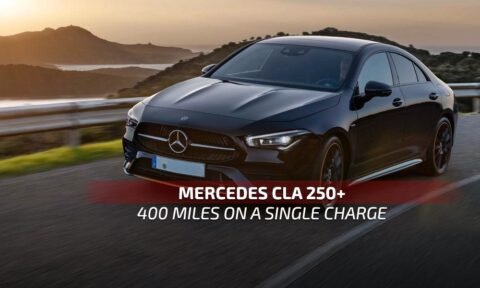The streets of England are undergoing a quiet, yet revolutionary, transformation. The low hum of an electric motor is quickly replacing the roar of the internal combustion engine, marking a pivotal moment in the nation’s automotive history. The acceleration of EV adoption UK is not a simple trend; it’s a full-fledged revolution driven by a perfect storm of policy, economics, and rapidly maturing technology.
Why is the shift happening so quickly? The reasons behind the surge in electric cars England are multifaceted, reflecting a growing consumer confidence and a concerted effort by the government and private industry to make zero-emission motoring the logical choice.
The Policy Hammer: Mandates and Milestones
At the heart of the rapid change lies an unambiguous legislative framework that has provided a clear trajectory for the UK automotive future.
The 2035 Deadline: A Catalyst for Change
The UK government’s commitment to ending the sale of new petrol and diesel cars by 2035 (with increasing manufacturer mandates from 2024) is the single most powerful driver. This policy, a key element of the UK green mobility push, has eliminated uncertainty for both consumers and manufacturers.
- Manufacturer Compliance: The government’s Zero Emission Vehicle (ZEV) mandate forces manufacturers to sell a rising proportion of electric vehicles each year. This requirement ensures a steady and increasing supply of new EV models, directly stimulating electric car demand in England. Manufacturers, needing to avoid heavy penalties, are prioritising the UK market with new, competitive, and affordable electric offerings.
- Consumer Clarity: For the driver, the deadline acts as a future-proofing guarantee. Buying an EV today ensures compliance with all future emissions regulations, protecting the vehicle’s residual value and eliminating the ‘will-they-won’t-they’ hesitation that once plagued the market.
Local Zones and Financial Penalties
Beyond the national deadline, local policies, such as the Ultra Low Emission Zone (ULEZ) in London and various Clean Air Zones (CAZ) in cities like Birmingham and Bristol, significantly influence purchasing decisions. These zones charge drivers of older, more polluting vehicles a daily fee.
The Economic Imperative: Why EVs are Cheaper to Run
While the upfront purchase price of an EV has historically been a barrier, the total cost of ownership now heavily favours electric vehicles, proving to be one of the most compelling reasons why drivers switch to EVs.
Fuel vs. Electricity: The Running Cost Advantage
The most immediate and tangible saving for drivers is the cost of ‘fuelling’ their car.
- Home Charging Savings: Drivers who can charge at home, especially on a dedicated off-peak EV tariff, can power their car for a fraction of the cost of petrol or diesel. While a mile in a petrol car might cost around 16 pence, a mile in an EV charged at home can cost as little as 3-5 pence. This substantial saving adds up to hundreds, or even thousands, of pounds saved annually.
- Public Charging is Improving: While public rapid charging costs more than home charging, it is becoming more competitive and reliable.
Tax and Company Car Perks
Government policy has also made EVs financially attractive through national tax incentives, directly boosting the UK EV market growth.
- Lower Benefit-in-Kind Tax: This is a colossal financial boon for company car drivers. Electric vehicles currently attract a very low BiK rate Compared to a high-emission petrol or diesel car, which could be subject to a BiK rate of over 30%, the electric alternative translates into thousands of pounds in annual tax savings for the driver. This has made fleet and business uptake a major pillar of the EV adoption UK story.
- The Electric Car Grant: Although the government’s Plug-in Car Grant has been significantly scaled back and replaced by schemes like the Electric Car Grant for specific, more affordable models, these targeted subsidies continue to make entry-level models more accessible.
- Road Tax Exemption: Zero-emission vehicles are exempt from Vehicle Excise Duty, commonly known as road tax, providing yet another small but persistent saving over the lifespan of the car.
Maintenance and Depreciation
EVs have far fewer moving parts than traditional cars, meaning less to go wrong more oil changes, spark plugs, or tricky exhaust maintenance to deal with. This results in significantly lower servicing and maintenance costs. Furthermore, the burgeoning used EV market is beginning to provide more affordable entry points for drivers, contributing to overall market maturity.
The Infrastructure Breakthrough: Charging Confidence is Key
One of the largest historical barriers to EV adoption UK has been ‘range anxiety’ the fear of running out of power with nowhere to plug in. This fear is rapidly dissolving due to massive, coordinated investment in EV charging infrastructure UK.
Exponential Growth in Charge Points
The UK has seen a dramatic, year-on-year increase in the number of public charge points.
- Rapid and Ultra-Rapid Expansion: Crucially, the growth is heavily focused on rapid and ultra-rapid chargers. The deployment of these high-power chargers, especially along major motorways and A-roads, means that long-distance journeys are becoming nearly as quick and convenient as refuelling a petrol car. Many modern EVs can charge from 10% to 80% in under 30 minutes at these locations.
- LEVI Funding: The Local Electric Vehicle Infrastructure (LEVI) fund is empowering local councils to install more on-street and destination chargers. This is vital for the estimated 40% of households in England that do not have off-street parking, making electric car ownership accessible to renters and urban dwellers. Innovative solutions, such as kerbside chargers and cross-pavement charging channels, are making EV ownership feasible for all.
Reliability and User Experience
Beyond quantity, the quality of the charging experience is improving.
- Zap-Map and Apps: Tools like Zap-Map allow drivers to locate, check the real-time status, and even pay for chargers, effectively eliminating the guesswork that defined the early days of EV charging.
- Improved Reliability: Competition among charging network providers is driving up reliability. Networks are focusing on improving uptime, standardising payment methods and ensuring a seamless charging workflow. This routine, predictable charging experience is turning charging from an inconvenience into a simple part of the journey.
The Technological Leap: Better Cars, Better Batteries
The quality of the electric cars England can buy today is light-years ahead of the early generation models.
Range Confidence
Modern EVs offer ranges that comprehensively cover the needs of the average UK driver. Many popular models now offer an official range of well over 250 miles, with several hitting or exceeding 300 miles on a single charge. Given that the average UK daily drive is far less than 50 miles, battery range is no longer a practical concern for the vast majority of journeys. The increasing prevalence of 800V architectures in new models is also facilitating faster charging speeds, making a quick top-up even more efficient.
Design, Choice, and Affordability
The initial years of EV adoption UK saw a limited selection of expensive or quirky cars. Today, every major manufacturer is releasing high-quality electric alternatives to their best-selling petrol models.
From family SUVs and compact city cars to luxury saloons and commercial vans, the choice of EVs is now extensive. Falling battery production costs, combined with the emergence of a strong second-hand market and the aforementioned government grants, mean that price parity with comparable petrol cars is becoming a near-term reality.
V. Societal and Environmental Drivers: The Green Shift
Underpinning the financial and regulatory momentum is a genuine cultural shift in Britain towards environmental responsibility.
Stronger Focus on Green Mobility
Over 70% of potential buyers cite reducing their carbon footprint as a major driver for the switch. The choice to buy an EV is viewed as a tangible, personal contribution to the UK green mobility targets. The UK EV market growth is therefore not just an economic story; it is a manifestation of public desire for a cleaner environment.
The Snowball Effect of Normalisation
Every EV on the road normalises the technology. As friends, neighbours, and colleagues switch, the misconceptions around charging, cost, and range are quickly replaced by positive, real-world experience. The UK electric vehicle trend has reached a critical mass where the switch is no longer seen as a leap of faith but a sensible, inevitable, and often aspirational choice.
The continuous expansion of the EV charging infrastructure UK and the growing environmental consciousness of the public are dissolving the final barriers, turning the UK electric vehicle trend from a niche choice into the new mainstream. For the drivers of electric cars England, the switch is no longer a concession to policy, but a strategic decision based on lower costs, better performance, and a clear path toward sustainable UK green mobility.
Your Questions Answered
The primary accelerator is the combination of the UK government’s 2035 ban on new petrol/diesel car sales and the significant financial savings, particularly the lower running costs and the attractive Benefit-in-Kind (BiK) tax rates for company cars.
The infrastructure is growing exponentially, with over 86,000 public chargers now installed. Crucially, the focus is shifting to highly reliable, rapid, and ultra-rapid chargers along major routes, backed by the LEVI fund to address on-street charging for homes without driveways.
Yes, while the main Plug-in Car Grant has changed, new incentives include the targeted Electric Car Grant for certain affordable new models, the Workplace Charging Scheme, and the substantial BiK tax savings for business/company car drivers.
The future is electric. The government’s Zero Emission Vehicle mandate forces manufacturers to increase EV sales annually, and the 2035 deadline for the end of new petrol and diesel car sales provides a clear trajectory towards the full electrification of the UK EV market growth.
The biggest benefit is the dramatically lower running cost. Charging an EV at home on an off-peak tariff is significantly cheaper per mile than buying petrol or diesel. For company car drivers, the very low BiK tax rate offers the most substantial annual savings.
Level up your driving with expert hacks, tips & must-know tricks. Join Ask About Cars.







